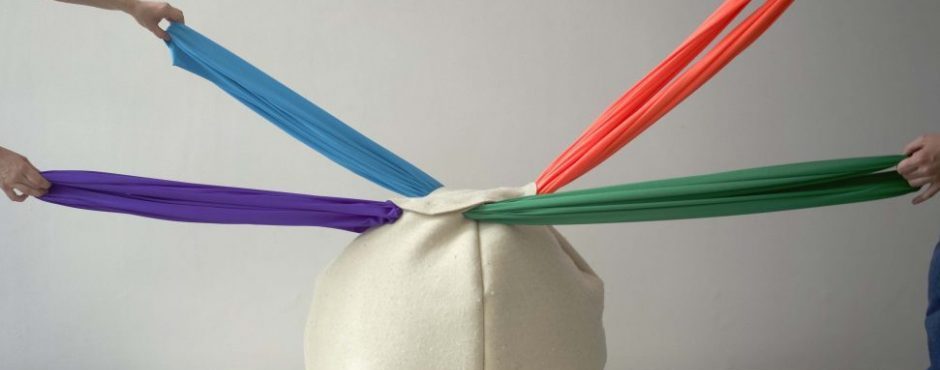The second task asked us to read one paper of our choice from the “Teaching at UAL” reading list. I chose “On the spectrum within art and design academic practice” by Luca Damiani (2018), a practicing artist and a UAL lecturer that provides a glimpse into his artistic practice and neurodivergence and how the two entangle in his creative expressions.
While Damiani’s exploration of his personal neurodivergence offers valuable insight into the experiences of a neurodivergent artist and educator, my expectations of the text differed. In my opinion, there are some critical gaps in how the neurodiversity paradigm could be expanded, particularly in supporting neurodivergent students in art and design education. One area of discomfort comes from the language used of “disorder” in the context of neurodiversity (Kapp, 2020).
Damiani uses the terms “Asperger syndrome” and “autism spectrum disorder” throughout his reflection – terms often tied to medical models of disability. This medical framing, focusing on diagnosis and deficits, contrasts with a neurodiversity perspective that emphasises neurological variations rather than pathology (Bottema-Beutel et al., 2021). Neurodiversity views conditions like autism not as disorders but as natural variations in human cognition and advocates for a shift from deficit-based models to strength-based perspectives. By shifting the focus from intervention and correction to acceptance, empowerment, and an inclusive support system, teachers can better align to a neurodiversity paradigm.
While Damiani does touch on the unique strengths neurodivergent individuals might bring (such as heightened focus or alternative ways of thinking), focusing on the diagnostic labels and “traits” of autism risks unintentionally reinforcing the notion of autism as an inherent problem. This might undermine the positive identity neurodivergence can offer, potentially alienating some neurodivergent students who don’t identify with the medicalised narrative of disorder or high and low functioning.
Further, Damiani’s exploration of neurodivergent artists and his own practice raises a common narrative about autism (the “high functioning” type): that many autistic individuals are “geniuses” in specific domains, such as art or technology. While this narrative can be empowering, it risks reinforcing the stereotype that neurodivergence is only valuable if it leads to exceptional abilities. This places undue pressure on neurodivergent students to meet high expectations or prove “geniuses” in creative fields, potentially overlooking those who may not excel in traditional measures but contribute in more subtle, equally valuable ways.
Damiani’s personal perspective as an individual with Asperger syndrome provides valuable insider insights. Still, the paper could be further enriched by incorporating perspectives from a wider spectrum of neurodivergent voices. For instance, nonconventionally verbal autistic individuals may face different challenges than those defined as “high-functioning,” and addressing their needs requires different interventions and supports.
By adopting a neurodiversity perspective in education, I hoped the text would encourage a focus not only on understanding neurodivergent experiences but also on structural and pedagogical modifications to ensure that autistic students can thrive in learning environments. This could include insights from existing neurodiversity-inclusive practices or scholarship (e.g., the work of Steven Kapp1, Damian Milton2, Dinah Murray3, etc.), which provide valuable frameworks for inclusive pedagogy.
In essence, engaging with existing scholarship or frameworks around neurodivergent-inclusive practices – such as the work on Universal Design for Learning (UDL) (CAST, 2018) or neurodivergent-led education initiatives (Glass, Meyer and Rose, 2013) – would help anchor Damiani’s insights in broader, systemic approaches to inclusive art and design education.
Lastly, Damiani shares insights into his own neurodivergent experience and how it shapes his practice but discusses a few practical tools or concrete changes that could make the learning environment more accessible for autistic students in academic settings. While he offers a reflective narrative about sensory overload, need for routine, and difficulties with social interactions, the piece stops short of providing actionable guidance on how educators and institutions can actively support neurodivergent students in real-world academic environments.
(Total word count: 631)
Footnote
- Kapp, S.K., 2022. Models of helping and coping with autism. In The Routledge International Handbook of Critical Autism Studies (pp. 255-269). Routledge. ↩︎
- Milton, D., Martin, N. and Melham, P., 2016. Beyond reasonable adjustment: autistic-friendly spaces and Universal Design. Pavilion. ↩︎
- Murray, D., 2020. Autistic People Against Neuroleptic Abuse. Autistic Community and the Neurodiversity Movement: Stories from the Frontline, pp.51-63. ↩︎
References:
Bottema-Beutel, K., Kapp, S.K., Lester, J.N., Sasson, N.J. and Hand, B.N., 2021. Avoiding ableist language: Suggestions for autism researchers. Autism in adulthood.
CAST (2018) Universal Design for Learning Guidelines version 2.2. Available at: http://udlguidelines.cast.org (Accessed: 05 January 2025).
Damiani, L.M., 2018. On the spectrum within art and design academic practice. Spark: UAL Creative Teaching and Learning Journal, 3(1), pp.16-25
Glass, D., Meyer, A. and Rose, D., 2013. Universal design for learning and the arts. Harvard Educational Review, 83(1), pp.98-119.
Kapp, S.K., 2020. Autistic community and the neurodiversity movement: Stories from the frontline (p. 330). Springer Nature.
